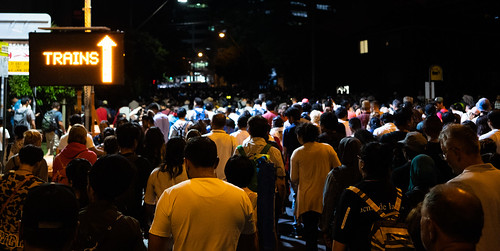Icipating city, and on an expected abuse prevalence of three derived from
Icipating city, and on an expected abuse prevalence of three derived from a current systematic evaluation [47]. Assuming this prevalence price, with a precision of 2.6 , a sample size of 633 individuals in every single city was essential, but thinking of the infinite population assumption a maximum of 656 people was permitted. The sample size was adapted to each and every city according to the population of individuals aged 604 years (representative and proportional to gender and age). Mean response price was 45.2 across nations. Far more detailed description of materials and solutions, sampling tactic and data collection, target population, cooperation, completion and response prices by country, are reported in a separate paper PubMed ID:https://www.ncbi.nlm.nih.gov/pubmed/24713140 [48].MeasuresThe participants completed a standardized questionnaire with different validated instruments [45]. Violence was assessed with 52 inquiries based around the UK study on elder abuse [49] along with the revised Conflict Tactics Scales (CTS2) [50]. The participants had been asked if throughout the past year they had been exposed to at the least one single episodeevent of: psychological ( things), physical (7 things), sexual (8 things) and financial abuse (9 things), such as injuries (7 items). The acts of abuse might have occurred once, twice, 3 to five, six to ten, eleven to twenty, or over twenty occasions through the past year, or didn’t happen the previous year. In addition, we assessed neglect (e.g. lack of assistance for routine housework) and information regarding the perpetrator’s primary traits. For this study, the concentrate was on exposure for the above pointed out abuse kinds, excluding neglect. Somatic Lixisenatide site symptoms had been measured using the brief version in the Giessen Complaint List (GBB) [5], consisting of 24 inquiries (graded 0, no symptoms to severely affected), with six questions in every single of four types such as: exhaustion (e.g. tiredness);  gastrointestinal (e.g. nausea); musculoskeletal (e.g. pains in joints or limbs); and heart distress (e.g. heavy, fast or irregular heartthrobbing). The total score amounts to 96, as well as the subtotal score in every symptom category ranges from 04. The larger the scores, the more one particular is impacted. For this study, the focus was on the total score. Depressive and anxiousness symptoms were measured using the Hospital Anxiousness and Depression Scale (HADS) [52]. This consists of four questions (graded 0), with seven concerns about depression (e.g. I really feel as if I’m slowed down) and seven about anxiety (e.g. I get sudden feelings of panic). The total score for depression and anxiousness is two every. A score of 0 corresponds to no situations, 80 to achievable situations and to probable cases. Higher scores correspond to high depression and anxiety levels. For this study, the focus was around the total score.PLOS 1 DOI:0.37journal.pone.046425 January 9,five Abuse of Older Males in Seven European CountriesHealthcare use was measured as variety of contacts with unique sorts of healthcare employees (e.g. physician) and healthcare solutions (e.g. principal care). Also, we assessed the amount of illnesses (e.g. cardiovascular) presently suffered by the elderly. The inquiries have been derived from the Stockholm County Council wellness survey [53]. High-quality of life was measured with the WHO High-quality of LifeOld (QoL) [54] consisting of 24 products (graded ). The total score amounts to 00 and products are divided into 6 subscales, i.e. sensory abilities, autonomy, previous, presentfuture activities, social participation, deathdying and intimacy. High scores correspond to high QoL (totalsubscales). For.
gastrointestinal (e.g. nausea); musculoskeletal (e.g. pains in joints or limbs); and heart distress (e.g. heavy, fast or irregular heartthrobbing). The total score amounts to 96, as well as the subtotal score in every symptom category ranges from 04. The larger the scores, the more one particular is impacted. For this study, the focus was on the total score. Depressive and anxiousness symptoms were measured using the Hospital Anxiousness and Depression Scale (HADS) [52]. This consists of four questions (graded 0), with seven concerns about depression (e.g. I really feel as if I’m slowed down) and seven about anxiety (e.g. I get sudden feelings of panic). The total score for depression and anxiousness is two every. A score of 0 corresponds to no situations, 80 to achievable situations and to probable cases. Higher scores correspond to high depression and anxiety levels. For this study, the focus was around the total score.PLOS 1 DOI:0.37journal.pone.046425 January 9,five Abuse of Older Males in Seven European CountriesHealthcare use was measured as variety of contacts with unique sorts of healthcare employees (e.g. physician) and healthcare solutions (e.g. principal care). Also, we assessed the amount of illnesses (e.g. cardiovascular) presently suffered by the elderly. The inquiries have been derived from the Stockholm County Council wellness survey [53]. High-quality of life was measured with the WHO High-quality of LifeOld (QoL) [54] consisting of 24 products (graded ). The total score amounts to 00 and products are divided into 6 subscales, i.e. sensory abilities, autonomy, previous, presentfuture activities, social participation, deathdying and intimacy. High scores correspond to high QoL (totalsubscales). For.
http://cathepsin-s.com
Cathepsins
